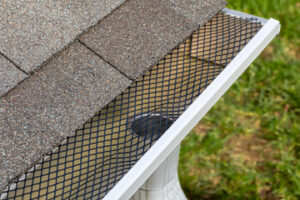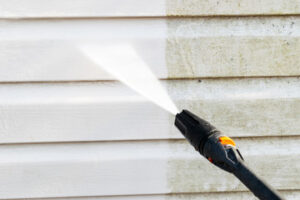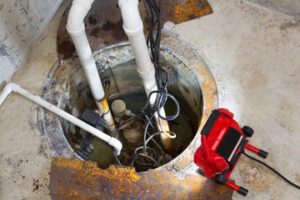Gutters Gainesville FL protect your home from foundation damage, soil erosion and other problems caused by standing water. They also provide a line of defense against mold and mildew.

A gutter (also known as an eavestrough) is attached to the roof’s fascia at a slight angle and directs rainwater into downspouts. The gutters’ slope is important because it helps to prevent clogs.
Gutters serve to keep your house safe from water damage by draining rainwater from the roof and away from the home’s foundation. Clogged gutters, downspouts that don’t properly direct water flow, or improper installation can lead to serious issues, such as roof leaks, basement flooding, foundation cracking, and landscape erosion. Gutters and downspouts are crucial for homeowners, especially those with a low roof overhang or located at the bottom of a slope.
Gutter systems are made up of metal or plastic pipes attached to the home’s fascia board perpendicular to the roof. They’re designed to catch rainwater and funnel it into downspouts or other drainage structures, which then direct the water away from your house and its foundation. Gutters are ideal for homes that are located at the bottom of a slope or with a short roof overhang, as rainwater is likely to run off the roof and downhill, potentially damaging the house’s foundation.
Gutters are also essential for those with garden or landscaping areas, as they help to prevent soil erosion. Without a gutter system, rainwater will pool in garden beds or around the foundation and create wet soil that can wash away the dirt and rocks that hold the soil together. Without proper drainage, the soil can also become compacted and cause structural problems for the foundation or basement of your home. Gutters prevent this soil erosion by diverting the rainwater into a garden or yard drainage system that will evenly distribute the water to prevent puddles and drowning plants.
A well-functioning gutter system also helps to keep insects away from the home. Bugs like termites and mosquitoes are attracted to standing water, which is common in yards and gardens without gutters. If bugs aren’t kept away from the home, they can gain entry through small openings in the siding, windows or doors of the house. Gutters can help to keep insects away by keeping the ground dry and directing rainwater to other drainage areas.
Another benefit of a well-functioning gutter system is that it can protect your home from mold and mildew. These fungi grow in damp environments and can be extremely difficult to get rid of once they’re established. By diverting the water away from your home and into a gutter system, you can protect yourself from these unwanted indoor pollutants that may trigger allergies and respiratory issues for those living inside the house.
Prevents Mold and Mildew Growth
One of the worst things that can happen to a home is mold and mildew growth. Not only does it damage the exterior of the house, but it also causes health problems for the occupants and lowers property values. Gutter systems play an essential role in managing the water around the house, and proper gutter maintenance can significantly reduce the risk of mold and mildew development.
Gutter systems work by collecting and channeling water from the roof, carrying it through downspouts, and directing it away from the foundation of the house. Without gutters, water can pool on the roof or in the basement, causing water damage to windows, walls, doors, and siding. Gutters prevent this damage by routing the water away from the house, preventing costly and stressful repairs down the road.
However, gutters can clog and overflow with debris, including leaves, twigs, and seeds. Over time, this debris can promote mold and mildew growth on the surface of the gutters. If left unchecked, the mold and mildew can spread to the wall and interior of the home, affecting indoor air quality and contributing to health problems for the occupants.
Regular cleaning and inspection of the gutter system is essential to ensure that it functions properly and does not become clogged. This is especially important in the fall, when the gutters are full of leaves and other debris. Using a ladder and a plastic gutter scoop, clean out the organic debris and scrub the gutters with soapy water to remove any visible signs of mold or mildew. Ensure that the downspouts are clear and are directing water at least five to ten feet away from the foundation of the house; if necessary, use downspout extenders to achieve this distance.
Keeping the gutters clear of debris and regularly inspecting them can prevent damage to the foundation and walls, mold and mildew, soil erosion, and costly repairs. It can also help to prevent insect infestations by eliminating the places where insects, rodents, and other pests breed. Proper gutter maintenance can save homeowners money in the long run, and help to keep their homes safe and healthy for occupants of all ages.
Prevents Soil Erosion
A gutter system is an essential component of a sustainable rainwater management strategy. Without gutters, rainwater can erode the soil around your foundation, causing cracks and shifting of the house’s foundation. Gutters are designed to capture the water from your roof, channel it through downspouts, and direct it away from the home’s foundation. This prevents soil erosion and water pooling, which can lead to basement flooding, mold growth, and other costly foundation damage.
In addition, proper gutter systems prevent the washing away of nutrient-rich topsoil, which can destroy your landscaping and garden beds. Gutters also protect the exterior walls of your house, preventing stains from moisture that can cause mold or mildew.
Without gutters, water cascades directly off the roof and hits the ground with force, resulting in soil displacement and washout of surrounding plants. Gutters are able to efficiently route water flow through downspouts and into drainage systems or rain gardens, preserving the soil’s integrity and minimizing erosion.
Keeping Gutters Clean
Your gutters need to be cleaned regularly to prevent blockage from debris. A clogged gutter can cause water to back up over the siding of your house, creating an unsightly stain and creating more moisture-related problems like wood rot and mold growth. Gutter cleaning services can help keep your gutters free from leaves, branches, and other debris so they can work as they should.
Seamless gutters offer a more durable design, with fewer joints where leaks and structural weaknesses may occur. In addition, seamless gutters are less likely to sag or pull away from your house due to their long, continuous length. This makes them a better choice for homes in high rainfall areas. Gutters that are sagging or pulling apart should be repaired or replaced as soon as possible to avoid damage from severe weather conditions. The longer you wait to address issues with your gutters, the more costly it will be for you in the future. A well-maintained gutter system can save you money on repairs, and help protect your property value. Whether you choose copper, vinyl, or aluminum, gutters can be an excellent investment for your home.
Increases Home Value
Gutters may not be as flashy as a new garage or kitchen, but they are an essential part of your home. They improve your home’s curb appeal and increase its resale value. They also prevent costly damage to the roof, foundation and other structures, and stave off moisture that causes mold, mildew and rot. A gutter system that is well-maintained and functional can add up to a lot of money over the years.
A clogged gutter will cause water to overflow, resulting in damage to the siding, windows, roof, landscaping and other parts of your house. It can even lead to rot and soil erosion. In addition, a poor gutter system can lead to damp insulation, rot and mold growth, and a fluctuating indoor temperature.
Potential homebuyers are willing to pay more for a house with a functioning gutter system. A home with clogged and rusty gutters will look less attractive and might discourage them from buying it. Moreover, buyers may be concerned that other maintenance issues might exist in the house.
Getting rid of rusty, clogged and hanging gutters is an easy way to make your house more appealing. A new gutter system can come in a variety of styles and colors to suit your home’s architectural design. It can also be made from a durable material that will last for years. Moreover, a contemporary gutter system will provide an immediate upgrade to your home’s appearance.
The benefits of a good-quality gutter system go beyond boosting your home’s curb appeal. It can also save you thousands of dollars in future repairs and reduce the risk of structural damage. In addition, gutters protect your house’s roof and foundation, prevent soil erosion, and eliminate the risk of leaks and flooding.
A well-maintained gutter system is an excellent investment that can significantly boost your home’s resale value. However, you should consider the cost of installation and maintenance before making a decision. Besides, you should check whether the company offering gutter services offers a warranty. This will give you peace of mind that you are investing in a quality product.




